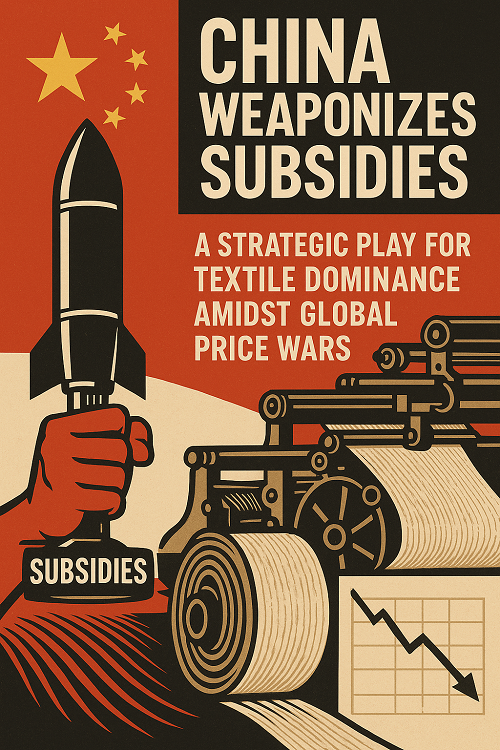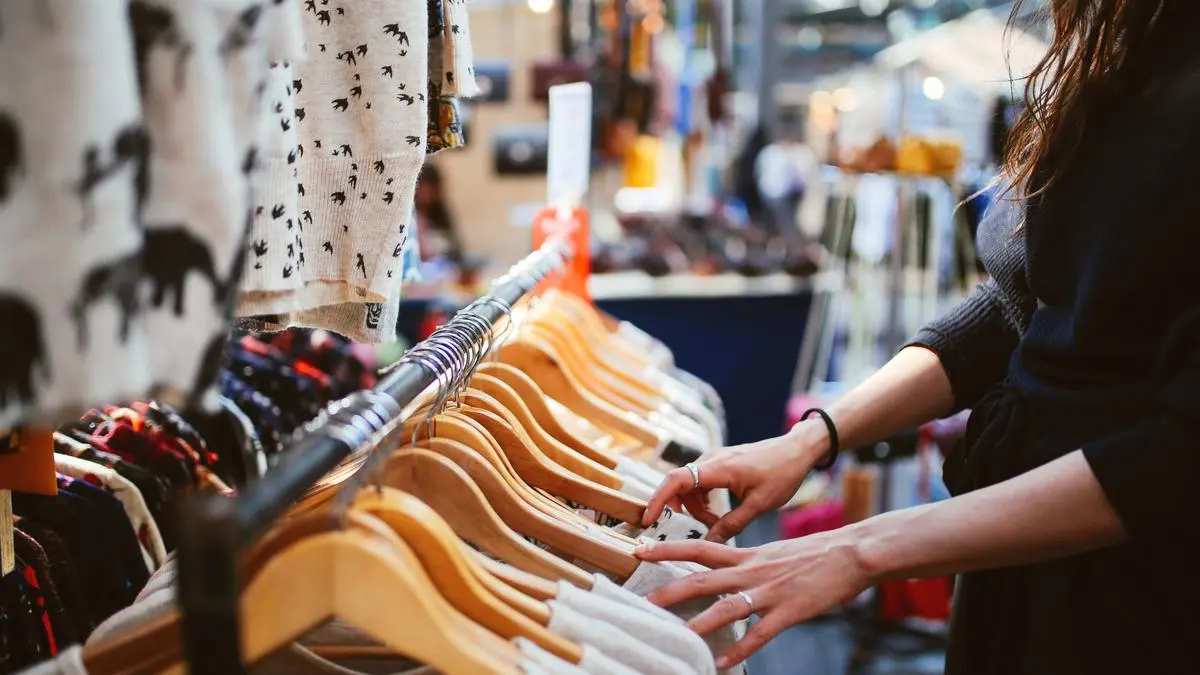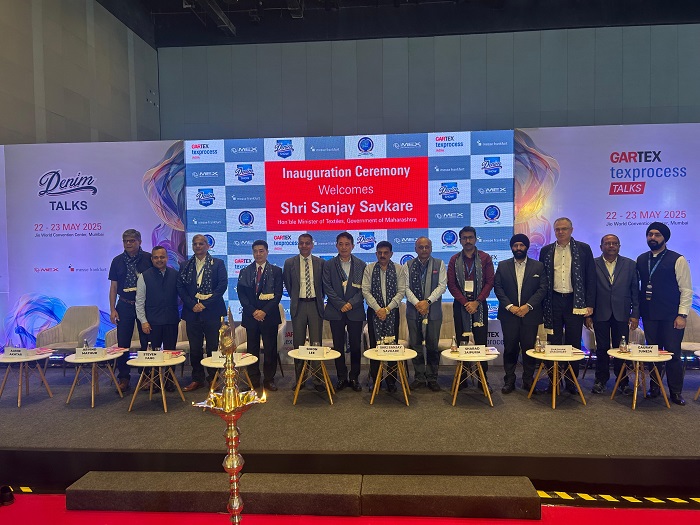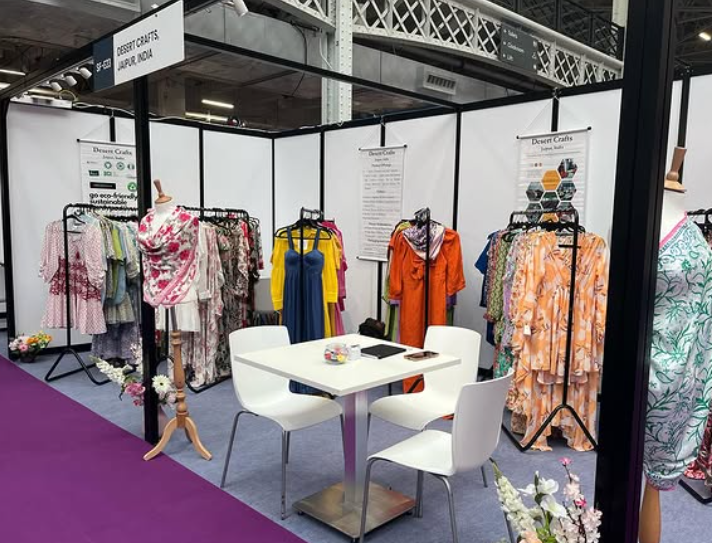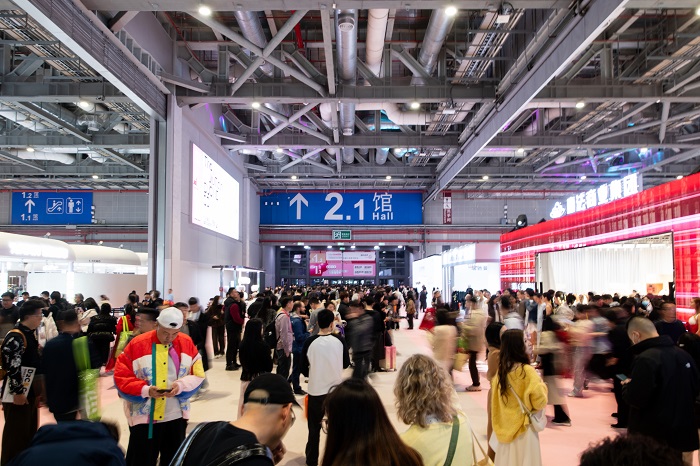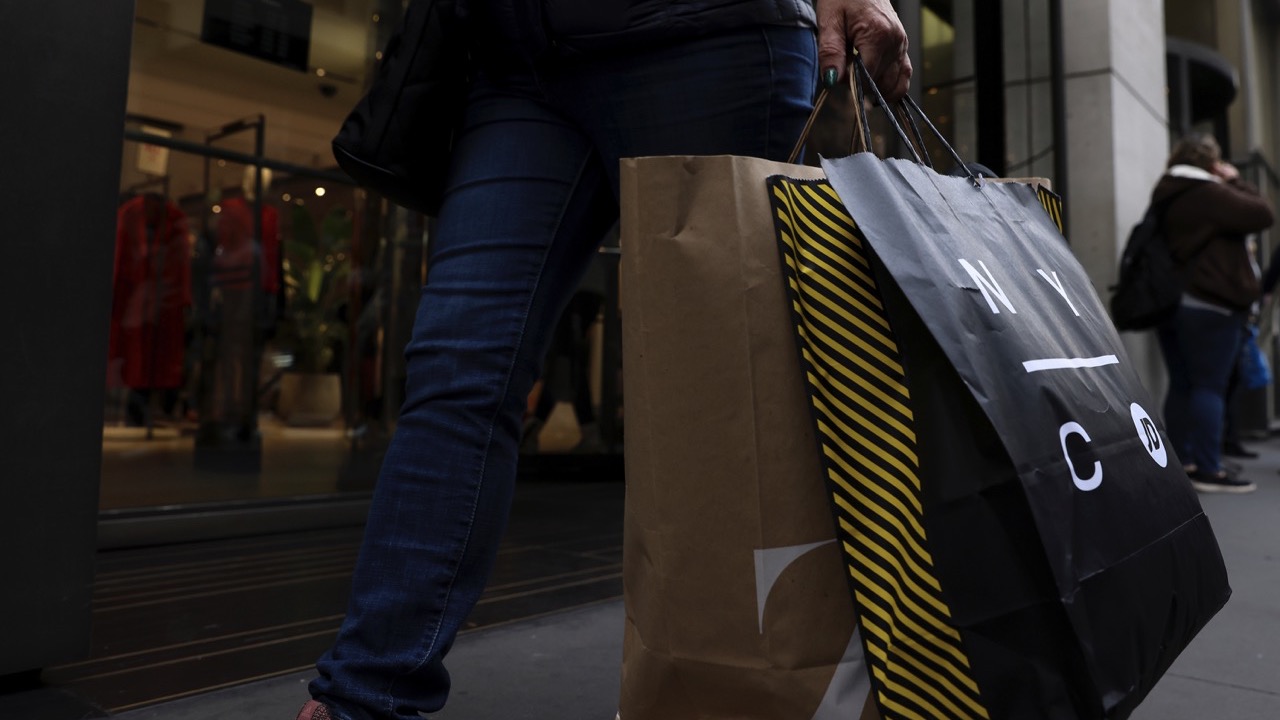In anticipation of the extraordinary Council meeting on October 6th in Granada, Alberto Paccanelli, President of EURATEX, and Jose Vte Serna, President of CIE, have jointly urged the EU Presidency to devise a fresh competitiveness strategy. This strategy is seen as crucial for reviving the European industry and ensuring its competitiveness in the coming decades. The proposed approach integrates trade, energy, state aid, and sustainability policies into a unified framework, aimed at bolstering a modern European manufacturing sector.
To fortify Europe's industrial foundation, the leaders emphasize three key points: securing a cost-competitive supply of clean energy, fostering innovation and nurturing a skilled workforce, and advocating for a level-playing field on sustainability globally.
They criticize the disjointed and conflicting objectives witnessed in recent years across trade, energy, industrial, and sustainability policies. The leaders warn that such inconsistencies may push European industry out of the market, potentially leading to de-industrialization and increased vulnerability to geopolitical challenges.
In light of this, they stress the need for a coherent set of policies that prioritize the competitiveness of Europe's domestic industry, including the textile sector. They propose expanding the scope of the Net-Zero Industry Act to encompass textiles and clothing, recognizing the industry's historical significance and its role in providing essential products across various sectors.
The European textile and clothing industry, with its 1.3 million direct jobs and diverse applications from fashion to automotive, aircraft, construction, and personal protective equipment, is deemed crucial to Europe's social and economic fabric. The leaders underscore the importance of maintaining Europe's capacity to produce high-quality, sustainable textiles and call for inclusion in future competitiveness policies and associated funding.
In essence, the call from Paccanelli and Serna underscores the vital role of the textile industry in Europe's economic landscape and advocates for a holistic approach to secure its competitiveness.
The Global Organic Textile Standard (GOTS), in collaboration with the UpRights Foundation based in The Hague, has unveiled the groundbreaking "GOTS Due Diligence Handbook for Certified Entities." This release marks a significant milestone in advancing sustainability, human rights, and ethical business practices within the textile sector. Ruslan Alyamkin, responsible for Standard Development and Implementation (Social Responsibility) at GOTS, emphasized the handbook's importance, stating it signifies GOTS's unwavering commitment to supporting Certified Entities on their path towards responsible business practices that prioritize human rights, social justice, and environmental integrity.
The handbook, rooted in recognized international frameworks, including the OECD Due Diligence Guidance for Responsible Supply Chains in the Garment and Footwear Sector (2018) and the UN Guiding Principles on Business and Human Rights (UNGPs), provides GOTS Certified Entities with clear guidance on implementing due diligence processes. This empowers them to adhere to domestic due diligence laws like the German Supply Chain Law, French Vigilance Law, and forthcoming EU legislation.
The GOTS Due Diligence Handbook is a comprehensive blueprint designed as a structured roadmap, guiding Certified Entities in establishing and refining their management systems. It emphasizes a holistic due diligence approach, enabling GOTS-certified companies not only to identify but also proactively prevent and mitigate potential adverse impacts on human rights and the environment. This initiative equips Certified Entities to navigate potential challenges, transforming them into leaders in responsible business conduct within the textile sector. Combined with the GOTS 7.0 criteria, this handbook paves the way for a more sustainable and socially conscious approach.
Additionally, GOTS is currently undergoing the OECD Alignment Assessment, demonstrating its dedication to aligning its criteria with international standards. This process, expected to conclude in January 2024, signifies GOTS's commitment to sustainability, transparency, and credibility. GOTS's ongoing efforts also include further guidelines for Certification Bodies, empowering them to enhance auditing and verification techniques for compliance with GOTS 7.0 criteria, reinforcing its commitment to excellence and improvement.
The International Cotton Association (ICA) has solidified its dedication to ethical trading and sustainability by entering into a Memorandum of Understanding (MoU) with TextileGenesis. This collaboration aims to strengthen the textile industry by fostering digital cooperation. Notably, one significant aspect of this partnership is the sharing of information about companies that have failed to fulfill arbitration awards. The ICA will provide TextileGenesis with the names of such companies, enabling the platform to alert its users, effectively cautioning them against engaging with these entities.
ICA President Tim North emphasized the significance of this partnership, underscoring TextileGenesis' leadership in textile value chain traceability. The MoU implies that participants in the cotton supply chain will be informed if they are dealing with a company marked as "not safe to trade with" by the ICA. Both organizations are committed to promoting ethical business practices, sustainability, and contract integrity within their memberships.
Amit Gautam, CEO & Founder of TextileGenesis, highlighted the ICA's valuable insights into companies' arbitration commitments, which enhances risk assessment on their platform. The collaboration further strengthens the ICA's existing partnerships with various cotton standards organizations, solidifying its role in shaping responsible and sustainable trade practices in the industry.
Additionally, the ICA has reaffirmed its dedication to secure trading through formal commitments and bilateral agreements with Better Cotton (BCI). Furthermore, the ICA has established Memorandums of Understanding (MoUs) with various influential organizations, including the China Cotton Association (CCA), China National Cotton Exchange (CNCE), Cotton Association of India (CAI), Aid by Trade Foundation's Cotton Made in Africa (CmiA) initiative, the International Textile Manufacturers Federation (ITMF), and the U.S. Cotton Trust Protocol. These partnerships underline the ICA's commitment to fostering responsible and ethical practices in the cotton industry and its role as a key player in promoting sustainability and fairness throughout the global cotton supply chain.
Renewcell, a trailblazer in large-scale textile-to-textile recycling, has taken a momentous stride in the pursuit of a circular textile industry with the expansion of its CIRCULOSE® Supplier Network (CSN) to an impressive 116 members. This expansion injects an abundance of innovation, diversity, and global presence into the network, amplifying the array of CIRCULOSE®-based materials available for sourcing.
Initially comprising 47 yarn and textile producers, the CSN has now blossomed into a diverse community, notably expanding its geographic footprint with the inclusion of new members from regions such as Vietnam, Taiwan, and the Czech Republic. This geographical diversification underscores Renewcell's dedication to advancing circular fashion on a worldwide scale.
The expansion introduces a dozen knitters and over thirty yarn spinners into the network, enriching the spectrum of CIRCULOSE®-based products accessible to brands globally. This marks a significant stride in ensuring that brands have access to a wide selection of materials made with CIRCULOSE®.
A pivotal development in this expansion is the inclusion of home textile suppliers, including Sharadha Terry Products, The Kadri Mills, and Yang Tsu, for the first time. This strategic addition opens up fresh possibilities for incorporating CIRCULOSE® into various aspects of the textile industry, reaffirming the network's adaptability and potential.
Patrik Lundström, CEO at Renewcell, underlines the significance of this expansion, emphasizing that it offers fashion brands a broader range of sustainable options for their designs. The voices of industry leaders like Shakaib Nazim from Indigo and Hatice Ates from Ekoten underscore the growing importance of sustainability in the fashion industry.
Renewcell's expansion has garnered praise from environmental advocates like Nicole Rycroft of Canopy and Priyanka Khanna of Fashion for Good, who view it as a catalyst for a circular textile industry.
With operations spanning fifteen countries, Renewcell's CIRCULOSE® Supplier Network has made sustainable materials even more accessible to fashion, lifestyle, and home brands worldwide, catalyzing positive change in the fashion supply chain.
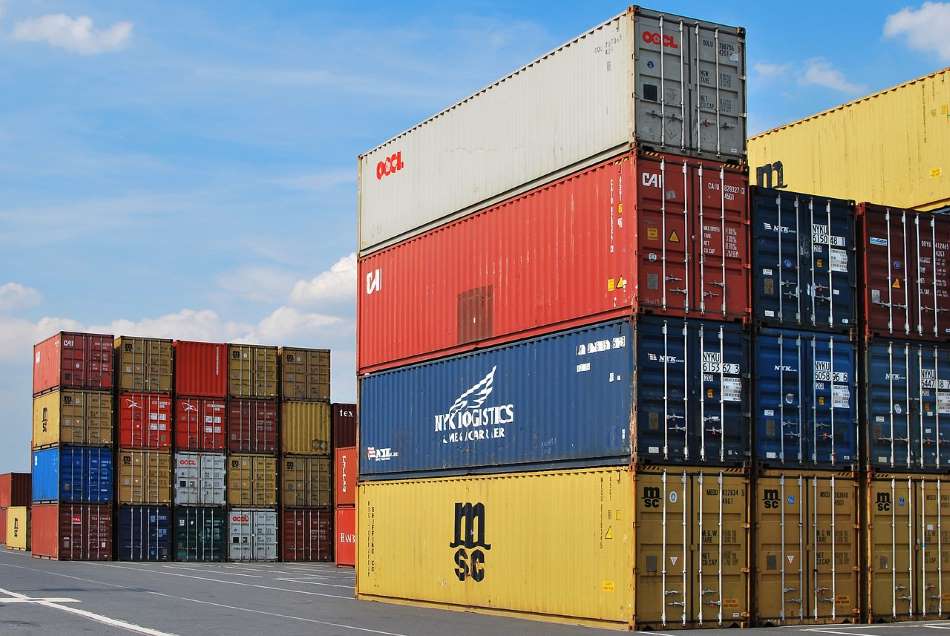
With RMG imports from major sourcing markets of Asia by the US and European Union having drastically declined in the first half of 2023, apparel suppliers are clinging to the hope that sometimes things do get worse before they get better as their current profit margins sink deeper. Just when things were finally shaping up post-pandemic -- despite an economy already under pressure with constant natural disasters, political turmoil, and a volatile global economic scenario- inflation in the cash-rich Western countries has led to apparel exports falling for most Asian suppliers in Bangladesh, Sri Lanka, Pakistan, India, and Vietnam among others.
Bangladesh exports dip
Bangladesh managed to retain second position in apparel shipments to the EU in Jan-Feb 2023 with a 22.75 per cent share of the trade bloc's overall garment imports, coming right after China which has always been the undisputed leader. However although inflation had started to improve in the Western countries, the downtrend has continued with Bangladesh’s apparel exports to the EU falling by 12.69 per cent to €9.06 billion in the first half of 2023 as compared to €10.37 billion in the same time period last year as overall garment demand decreased in the 27-nation economic bloc due to high inflation and lesser fashion shows.
Eurostat data shows knitwear imports of the EU from Bangladesh in January-June of 2023 decreased to €5.38 billion from €6.40 billion in the same period of 2022. Bangladesh’s woven garments exports to the EU in the first half of this year also fell to €3.68 billion from €3.96 billion in the same period of previous year.
Export slump felt in Sri Lanka, Pakistan and India
Although Sri Lankan economy is in recovery mode after hitting rock-bottom, the trade balance expanded in August this year as earnings from merchandise exports fell as a result of a continued decline in apparel exports. Imports during the month remained subdued. The trade deficit in August 2023 expanded to $307 million from $260 million a year ago, however, the cumulative deficit in the trade account during January- August 2023 narrowed to $2,964 million, from $3,889 million recorded over the same period last year. Industrial exports, mainly led by textile and garments sector, fell 9.8 per cent YoY to $871.7 million and it is estimated that Sri Lanka would lose about $1 billion from apparel exports this year compared to last year.
Meanwhile, Pakistan’s textile exports have also gone downhill with a slump of 12 per cent on a year-on-year (YoY) basis as of September 2023 with a $1.35 billion compared to $1.53 billion reported in the same period of last year. According to All Pakistan Textile Mills Association stats, exports slumped 8 per cent on a month-on-month basis as compared to exports of $1.46 billion registered in August 2023. The country is currently in the throes of inflation as the nation reels from high fuel and energy prices.
India too has been greatly affected by the EU and US slowdown as it's textile and apparel exports declined by 13.55 per cent from April to July 2023, amounting to $10,154.83 million. The Ministry of Commerce and Industry data has shown that during the first four months of the current fiscal 2023-24, export of cotton yarn, fabric, made-ups, and handloom products decreased by 8.34 per cent to $3,767.83 million, compared to $4,110.67 million in the previous period.
With the global apparel trade scenario being currently extremely low-key, the cash-rich EU market has also been greatly affected and local manufacturers in Asian countries may now need to focus on alternative global markets rather than single markets to ensure balanced investment plans for a more sustainable economy.

The Bangladesh RMG segment is under a lot of pressure to retain its second position in apparel shipments to the European Union – ranked right after China as the undisputed leader-- even as their current profit margins sink deeper with international clothing brands demanding further discounts to place even small orders and most buyers inquiring but not placing any bulk quantities from their local apparel retailers.
As per European Union’s to official stats, apparel imports from the world has declined 7.44 per cent during the first seven months of 2023 compared to the same period last year, signifying the EU’s import from the world declined to $52.38 billion in January-July 2023 from $56.60 billion in January-July 2022.
Both in quality and quantity, the EU’s clothing import from the world had a rapid slowdown by a massive 12.80 per cent which was down to 2.17 billion kg in Jan-Jul 2023 from 2.49 billion kg in January-July 2022. Although almost all the top 10 apparel-supplying countries to the EU have shown negative growth in both value and quantity, Bangladesh is affected the most as its economy depends a lot on RMG exports.
Bangladesh face run-up to dismal Christmas sales
Having already tackled unsold inventory and faced order cancelations from global brands due to logistics and transportation during Covid years and geo-political tensions due to Russia-Ukraine war, it may well be after the next spring season for the garment shipments to make profits. Consumers in the Western world are facing inflation and unsold old stocks are being brought out again in stores. Thus local garment exporters are not expecting any increase in shipments around Christmas sales. Earlier, nearly 60 per cent of Bangladesh apparel shipments were for the Christmas season - which started in September and continued up to the first week of December- but this year there are fewer work orders at even lower prices to buyers.
Suppliers from across the world face losses
The EU’s imports from Turkey which is the third largest apparel source also declined during the January-July period this year by 10.60 per cent in value term to $6.39 billion in January-July 2023 from $7.15 billion in January-July 2022. Even quantity-wise, there was a sharp decline of 22.52 per cent to 212 million kg of apparel from 273.63 million kg last year. At the same time, imports from India and Vietnam also fell by 5.79 per cent and 1.84 per cent respectively and in terms of quantity, both countries saw a drop decline of 11.49 per cent and 8.99 per cent respectively.
The scenario is the same for other top sourcing countries such as Cambodia, Pakistan, Morocco, Sri Lanka, and Indonesia in the January-July period with a respective decline of 7.20 per cent, 9.81 per cent, 12.59 per cent, 13.72 per cent and 17.56 per cent in value terms. At the same time, the EU’s global import price increased by 6.14 per cent in January-July 2023 while from Bangladesh it increased by 3.24 per cent, even though it cannot compete against the price-competitiveness of Chinese apparel.
However, the fact that Bangladesh has been performing relatively better than other global competitors during this period is not that it has suddenly become the most-preferred destination but more to do with the inflated raw material prices and subsequent hikes in production cost as the value of goods exported rose although overall volume has fallen.
With experts advising a cautious yet optimistic approach for the rest of the year as inflation and economic indicators started stabilizing in major export markets, it may just be a matter of time before things look up again for suppliers.

Hailed by the digital world as the natural evolution of internet usage for business, Web 3.0 is gathering mixed response from the world of fashion. This version of the internet is trying to introduce the usage of advanced Blockchain enablement such as crypto currencies and NFTs. Web3 is the third major evolution of the internet. Web 3.0 encompasses both new technology and a new culture for fashion and beauty, characterized by decentralization, co-creation and co-ownership. The luxury goods industry is also experiencing the transformative effects of these emerging technologies.
With this concept at the helm of Web 3.0, some luxury fashion labels have embraced Web 3.0 communities by beginning to accept crypto payments. These in clued: Gucci, Off-White, Farfetch, Hublot, Phillipp Plein, Rolex, Patek Phillipe, Frank Muller, Tag Heuer, Ralph Lauren, and Balenciaga. Regular sportswear and clothing brands too have embraced crypto payments such as: Nike, Hipster’s Paradise, H&M< Dollar Shirts, Aeropostale, ASOS, American Eagle, Aerie and Calvin Klein among others.
However, instead of accepting crypto currencies directly from the customer, brands are opting for crypto currency payment gateways that accept digital currency from the payer on the brand’s behalf and remit that payment to the brand in fiat currencies. However, many brands don’t want to engage as the inflation and the bloodbath of the crypto currency crisis has them apprehensive about dealing with it. They can’t be blamed for showing caution as the “crypto crisis” wreaked havoc in 2022, wiping out vast fortunes.
Web 3.0 to transform luxury goods and services industry
Driven by millennials and Gen Z consumers who are early adopters of new technologies, digital demand for fashion and luxury brands is expected to grow to 25 per cent by 2025 says a Morgan Stanley report. A significant way crypto currency and Blockchain technology are transforming the luxury industry is by creating new business models. Luxury brands are now leveraging Blockchain technology to create unique limited-edition products and newer ways of customer engagement -offering enhanced transparency and security in their transactions. From ensuring the authenticity of luxury goods to providing a seamless payment experience, Blockchain and crypto currency are revolutionizing the way the luxury goods industry operates. Gucci last year built a virtual gallery showcasing NFT (non-fungible token) artwork and vintage fashion items, and rolled out a $12.99 pair of virtual sneakers.
Whilst not in the luxury category, sportswear and clothing brand Nike has embraced it with great gusto. Nike rolled out its ‘Swoosh Community’ in November 2022, with options for members to participate in activations online and in the real world, engage with Nike athletes and creatives and use virtual Nike gear in games. In April 2023, Nike launched its first virtual collection, called Our Force 1, which was co-created by its community. Big brand moments like this aside, consumer engagement with Web3 activations is still on the low side, and it skews towards the young, affluent, male demographic. It is as if the hype over the advent of the “Web 3.0-curious” didn’t percolate to other demographic segments.
Why some brands are fence-sitters
The crypto currency crisis sapped the forward momentum of the emerging Web3.0 marketing landscape, where business leaders were eager to figure out how Bored Ape NFTs could translate to new channels to reach consumers. This is exactly why CMOs of many brands aren’t impressed. This conservative approach cannot be overturned just because Web 3.0 is being hailed as the latest innovation in the worldwide web as the Metaverse proved to be a nightmare with security and other IP address issues. Web 3.0 has to work hard to enable brands see real reasons like improved sales and profits rather than gimmicks. If crypto currencies don’t regain the public’s trust, it is unlikely brands that are skeptical are likely to embrace Web 3.0 for what it is.
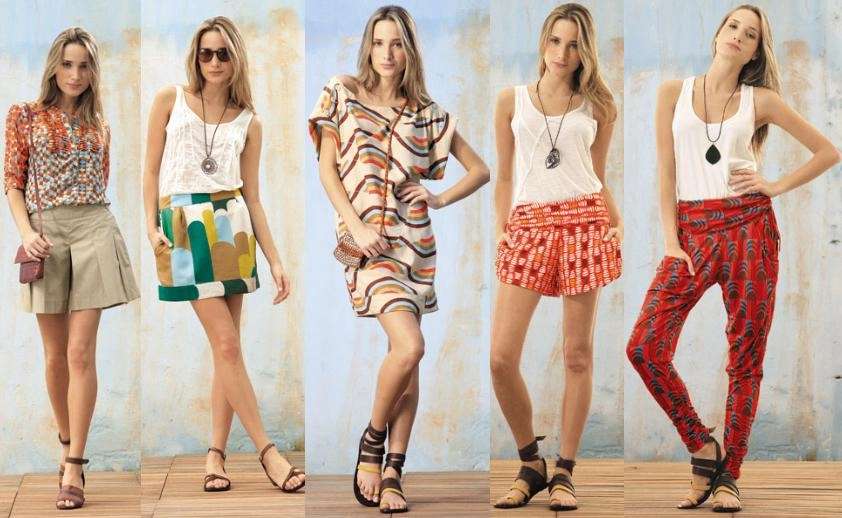
Sustainability overlooked fast fashion brands are playing to the galleries in Brazil with affordability and quick access as their trump cards. The real story according to ScienceDirect is that 65 per cent of Brazilians seek to buy generic products from sustainable companies, but they do not know if the clothing manufacturer is sustainable. It is also observed that the values spent on clothes do not seem to be related to the resulting ecological footprint. It is this situation that fast fashion brands find working for them in Brazil. As a nation, Brazil loves its fashion, and the affordability and access of fast fashion makes it an easy way into wardrobes.
C&A is the fast fashion retail leader
The biggest fashion retailer in the country is C&A. With a mix of physical and online retail, the chain has 300 stores in Brazil, located in over 125 cities across the country. In April 2019 in a first, the Dutch-owned company listed the shares of its Brazilian subsidiary in the country’s stock market. Aiming at boosting operations in the country, the IPO issuance met a lukewarm response from investors for inexplicable reasons and ever since, C&A stock continue to underperform in Brazil, despite being the leader of fashion retail in the country, offering one of the best online purchase support spread across the entire large landmass.
According to Statista, by the end of 2023, Brazil will be the 15th largest e-commerce market in the world. The Brazilian e-commerce market is expected to reach a value of $55.8 billion in 2023, up from $41.8 billion in 2022. In e-commerce, like in many countries, the fashion segment is the largest, accounting for one-fourth of total e-commerce sales in 2022. Amazon and MercadoLivre are the biggest online retailers, and that shows Brazil’s digital maturity not only in market size but also as an attractive new market for international retail brands.
Shein prefers Brazil as its Latin American hub
Chinese fast fashion retailer Shein is moving forward with its plan to establish Brazil as a manufacturing and export hub for the rest of Latin America. It expects by the end of 2026, about 85 per cent of its sales will be local, from both manufacturers and vendors. Marcelo Claure, Chairman of Shein in Latin America, has stated the brand’s Latin ambition – that key to Shein’s growth strategy -- is leveraging its global scale and operational excellence to support and contribute to local economies and eco-systems. Claure explained they have seen great success in Brazil since its launch in 2020. The increase in consumer demand came as an opportunity to localise more of the supply chain to benefit consumers, small businesses and the wider economy. Additionally, Shein launched a local marketplace with Brazilian third-party sellers supporting local small and medium entrepreneurs in 2022. The company will onboard 2,000 local manufacturers and create approximately 100,000 jobs by 2026 to support this strategy and produce Shein-branded products.
Similar to Shein, H&M has announced its entry into this football-loving nation in 2025 by opening stores in Sao Paolo and Rio Janeiro. Shein’s success in under three years and H&M announcing its debut, has shifted the spotlight on Brazil and has caught fancy in the eyes of many international apparel retail brands. These events are going to push the economy of the country further. Especially high amount of investment will lead to growth of many industries, and apparel being one of them will definitely progress.
Crocs, the internationally renowned footwear brand owned by Apparel Group, has won the prestigious Superbrands status. This award is a testament to Crocs' exceptional branding excellence, which has helped it to grow and exceed in the competitive market.
The Superbrands organization is a globally renowned independent authority and arbiter of branding brilliance. The Superbrands status is awarded to brands that have achieved exceptional levels of brand recognition, quality, and customer satisfaction.
Neeraj Teckchandani, CEO of Apparel Group, shared his strategic perspective on the recognition, stating, "Receiving this prestigious Award is both an honor and a valuable affirmation of our strategic commitment to excellence and innovation.
This recognition underscores our relentless pursuit of delivering unparalleled quality and value, reflecting the strength and resilience of our brand portfolio. I am immensely proud of our dedicated team, whose consistent efforts enhance our brand's reputation and strategically position us for continued growth and success in the competitive global market."
Crocs' exceptional branding excellence is evident in its unique ability to resonate with consumers. The brand offers products and experiences that stand out in the marketplace, and it has built a strong following among customers of all ages and backgrounds.
The Superbrands status is a significant achievement for Crocs and Apparel Group. It is a testament to their commitment to excellence and innovation, and their unique ability to connect with consumers.
Ambition to Action
The Global Fashion Summit: Boston Edition, held on September 27, 2023, convened hundreds of representatives from brands, retailers, NGOs, policy, manufacturers, and innovators to transform ambition into action. The Summit explored the 2023 editorial theme, ‘Ambition to Action’, while reflecting on and responding to what happened at Global Fashion Summit: Copenhagen Edition in June.
Highlights
Fashion CEO Agenda 2023: GFA published Fashion CEO Agenda 2023, a concise report to support the establishment and implementation of leadership strategies to achieve a net positive fashion sector.
GFA Designer Challenge 2023: GFA unveiled the latest response to the GFA Designer Challenge 2023, presented by Smiley. Julius Juul, Creative Director & Co-Founder, Heliot Emil, created an alliance with Upcycle Labs to showcase the possibilities of circular fashion.
GFA Policy Matrix: Americas: GFA launched the GFA Policy Matrix: Americas - a non-exhaustive document that encapsulates a wide array of policy efforts across the Americas.
Fashion Redressed: The Summit presented a new online series titled ‘Fashion Redressed’ that highlights the creativity of the fashion world in finding sustainable solutions.
Circular Models: Trove and Worldly delved into their newly launched study, ‘Where Are Circular Models Effective Sustainability Strategies for Fashion Brands?’, which reveals where and how circular models play an important role for brands working to reduce their emissions.
Next Gen Assembly: The eight members of the first iteration of GFA’s Next Gen Assembly presented their manifesto via a powerful video message to attendees – outlining their aims and ambitions for the groups’ continued work to impact the fashion industry by supporting a sustainable trajectory.
Higher Ground? The recently launched ‘Higher Ground?’ report, by ILR Global Labour Institute and Schroders, was discussed during the session ‘On The Ground: Adaption or Mitigation?’ The report covers the impacts of climate change on global apparel production.
Alliance for Chemical Textile Recycling (ACTR): During the Global Circular Fashion Forum session, the Alliance for Chemical Textile Recycling (ACTR) was launched, representing a group of textile chemical recyclers for cotton, polyester, and blends. The alliance seeks to contribute to solutions for addressing the textile industry’s impact on society, the environment, and businesses.
Innovation Forum: The Summit also presented an Innovation Forum, enabling attendees to meet with 14 sustainable solution providers from across the value chain.
The Global Fashion Summit: Boston Edition was a successful event that brought together key players in the fashion industry to discuss and address the most pressing sustainability challenges. The Summit provided a platform for collaboration, innovation, and action, and it is clear that the industry is committed to transforming ambition into action.
Alliance for Chemical Textile Recycling (ACTR): During the Global Circular Fashion Forum session, the Alliance for Chemical Textile Recycling (ACTR) was launched, representing a group of textile chemical recyclers for cotton, polyester, and blends. The alliance seeks to contribute to solutions for addressing the textile industry’s impact on society, the environment, and businesses.
Innovation Forum: The Summit also presented an Innovation Forum, enabling attendees to meet with 14 sustainable solution providers from across the value chain.
- 1
- 2
- 3
- 4
- 5
- 6
- 7
- 8
- 9
- 10
China Weaponizes Subsidies: A strategic play for textile dominance amidst global…
Despite the narrative of a global apparel pivot away from China, the reality on the ground paints a different picture.... Read more
Shift in fashion's value proposition, can speed and sustainability coexist?
Expanding on the recent LinkedIn post by Lubomila Jordanova, CEO & Founder of Plan A and Co-Founder of Greentech Alliance,... Read more
Gartex Texprocess India 2025 kicks off in Mumbai with global focus
The 2025 Mumbai edition of Gartex Texprocess India opened its doors at the Jio World Convention Centre on May 22,... Read more
EU Horizon T-REX project data reveals challenges for textile-to-textile recyclin…
A new report from the EU Horizon T-REX (Textile Recycling Excellence) Project, while focused on piloting a data model to... Read more
Source Fashion to showcase global ethical sourcing solutions in July 2025 editio…
Source Fashion, the UK’s leading responsible sourcing show, is set to return from 8-10 July 2025 at The Grand Hall,... Read more
CHIC September 2025 to return in Shanghai with ‘Fashion Picnic’ theme
China’s leading fashion trade event, CHIC 2025 (September), will return to the National Exhibition and Convention Center in Shanghai from... Read more
US consumer confidence dips amidst economic uncertainty
In April 2025, the US consumer sentiment recorded a shift as confidence levels dipped, indicating potential headwinds for the economy.... Read more
Secondhand on the rise in Europe as it readies for a €26 bn fashion revolution b…
Across Europe, pre-owned garments are shedding their ‘used’ label and stepping into the spotlight as a mainstream force. A new... Read more
India-Bangladesh Trade in Turmoil: Retaliatory measures threaten regional commer…
The burgeoning trade relationship between India and Bangladesh has hit a turbulent patch, marked by a series of retaliatory trade... Read more
Peeling Back the Fabric: Glimpact study gives true ecological threads of apparel…
A groundbreaking new study by Glimpact, has pulled back the curtain on the often-obscured environmental footprint of the apparel industry,... Read more

